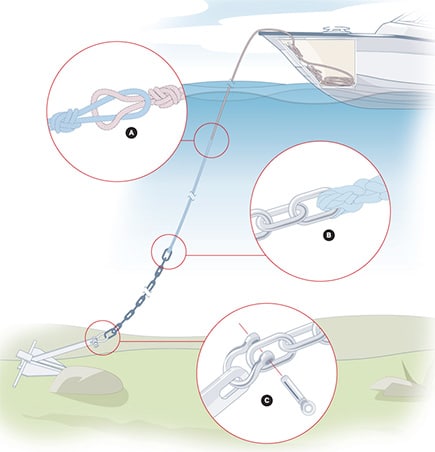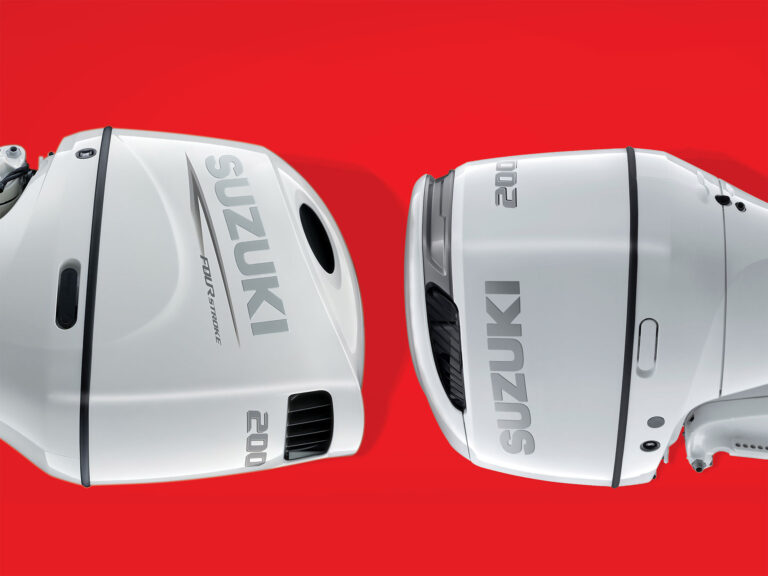To the newbie, anchor tackle may seem rather mundane. Experienced boaters know better. Proper tackle leads not only to convenient and efficient holding, but also to safety. Set things up correctly, and your craft will stick fast, even in strong currents or windy conditions. Do it wrong, and you could find trouble in short order. Anchoring can be a complex subject, but we’ll take a look here at the construction of a basic rode.
Rope — The Main Ingredient
When building an anchoring system, keep in mind that prudent seamanship demands a scope of 7:1 for holding in the worst conditions. This means that for every foot of water you’ll be anchoring in, seven feet of rode is generally required, plus the height of the bow cleat above the water. Anchoring in 60 feet? You’ll need about 455 feet of rode on most craft to hold through the worst. Other things to consider:
– While straight chain is often used on bigger boats, the anchor rode on most recreational craft is generally comprised of rope with a trace of chain. Nylon — either three-strand or a double braid — is best, because it is elastic, strong and easy to handle. Always cleat the bitter end in the anchor locker.
– A general rule of thumb is to use one-eighth-inch-diameter rope for every nine feet of boat length. Running a 36-footer? You’ll need a half-inch-diameter rope.
– However, if anchoring in fairly deep water (say, more than 60 feet), you might consider running a slightly thinner-diameter rope in the upper zone of the rode. This will reduce drag and make hauling much easier. The two ropes can be easily secured via a strong loop-to-loop connection. (A)
Chain — The Crucial Component
– Regardless of boat style, all anchoring systems should have a boat length of stainless-steel or galvanized chain separating the rope and the anchor. The chain prevents chafing and abrasion. Its weight also keeps the anchor’s shank horizontal, allowing the flukes to better bite the bottom.
– Fasten the top end of the chain to the anchor rope with an eye splice. A crown splice can be woven into the chain, (B) or use a thimble eye splice connected to the chain via a shackle.
– Shackle the lower end of the chain to the anchor. (C) The shackle should be larger than the chain links, and it’s wise to wire the pin (known as mousing) to keep it from coming undone. You might also consider using an Anchor Saver when connecting the chain to the anchor.
Anchoring need not be overly complicated. But following some time-honored traditions will help hold your boat in tough conditions — and, more importantly, keep you safe.

Save That Anchor!
When an anchor becomes stuck in the bottom, employing an Anchor Saver can get it back. The system allows an anchor/chain connection to break away and transfer down the anchor’s shank via a stainless-steel cable. With tension now pulling the anchor’s flukes in the opposite direction, the hook is easily pulled from the bottom. See our review at boatingmag.com/anchor-saver.









